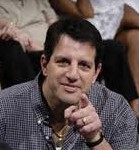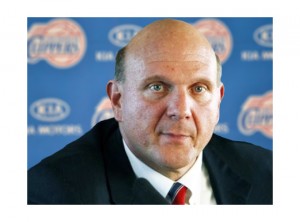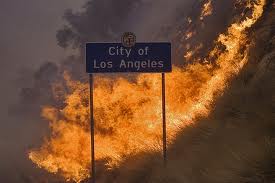 The short answer is $600 million “plus.” The $600 million represents economic value of the team based on fundamentals, while the “plus” represents intangible value that is specific to the buyer’s view of the Hawks opportunity.
The short answer is $600 million “plus.” The $600 million represents economic value of the team based on fundamentals, while the “plus” represents intangible value that is specific to the buyer’s view of the Hawks opportunity.
What is the “plus” worth? Keep reading.
Pro sports franchises are one of a kind, extremely desirable and rarely available. While that accounts for some of the eye-popping NBA team sales prices lately, it doesn’t make pricing the next one much easier. Each team has its own economic factors – both fundamental and intangible – that contribute to the final sales price.
Pro teams were once considered the ultimate vanity purchase for rich guys. Look, anyone with money can buy a Ferrari or a yacht. But only a select few can own a professional basketball team. Besides, if you own a team, you can get a Ferrari sponsorship or a boat deal.
As league revenues climbed into the stratosphere, the economic value of owning a franchise became greater and greater. With new revenues, franchise prices climbed, owners became public figures, and teams became part of asset groups that included the arena, other teams, local TV networks and other related entities. The Orlando Magic used the team as part of a charter airline service. Cleveland Cavaliers owner Dan Gilbert also owns Fathead, the sports wall sticker company.
The firm I work for, Intensity (www.intensity.com), uses state-of-the-art methods in economics, statistics and machine learning to provide teams, leagues and networks with custom tools that increase revenues, profits and fan engagement. (My boss, Ryan Sullivan, Ph.D, collaborated on this column).
 The strongest fundamental economic factor relating to franchise value is revenue: the correlation between Forbes 2014 valuation and 2012-2013 revenue is 97%. In contrast, operating income is less of an indicator of value.
The strongest fundamental economic factor relating to franchise value is revenue: the correlation between Forbes 2014 valuation and 2012-2013 revenue is 97%. In contrast, operating income is less of an indicator of value.
Indeed, not all NBA teams have positive operating income. Looking at the three most recent sales, the Kings had revenues of $115 million and sold for $534 million (a revenue multiple of 4.6) and the Bucks had revenues of $109 million and sold for $550 million (a revenue multiple of 5.0). But the Clippers were a huge outlier with a revenue multiple that is a whopping three times greater! The Clippers had revenues of $128 million and sold for $2 billion (a multiple of over 15). Naturally, many factors other than current revenue must be at play.
Remember that a team’s value to a buyer is unique to its market and the idiosyncratic desires of that buyer. In reality, no one buys a pro sports team to feed their families. The business is too mercurial. You may make $10 million one year, sign two high-priced free agents, and lose $20 million the next year. If your goal is to generate consistent income, then buy a coat hanger factory. That way you can automate operations and know what your costs will be from day to day. You do not need to get into the conference finals to break even. The financial reason for owning a team is mostly rationalization. But that doesn’t mean that these highly successful businesspeople want to lose money.
The last two NBA lockouts have primarily been about achieving the Holy Grail of sports: cost certainty. The owners succeeded in reducing the players’ share of revenue and removing the incentive to overspend on salaries. These two factors make the teams much more valuable as owners minimize one of their greatest risks: wild swings in player costs.
 Several years ago I was having breakfast with Steve Ballmer when he was being courted to buy the Seattle SuperSonics. We were discussing his interest in buying the team. His attitude at that time was “Why would I invest in a business where the employees make more than the owners?”
Several years ago I was having breakfast with Steve Ballmer when he was being courted to buy the Seattle SuperSonics. We were discussing his interest in buying the team. His attitude at that time was “Why would I invest in a business where the employees make more than the owners?”
Ballmer just spent $2 billion for the Clippers. Clearly the new salary rules have changed his mind.
Looking at the Clippers situation, a simple financial valuation would peg the fundamental component of the price at less than $700 million ($128 million in revenue times a multiple of 5 equals $640 million). Remember that the Bucks sold at a revenue multiple of 5. What other intangible factors are worth more than $1.3 billion to account for the astronomical purchase price?
• Future Growth Potential: Both the Clippers and the league are in the process of signing new local and national television contracts that may double their current revenue.
• They are the highest profile businesses out there: Mark Cuban gets more airtime than the CEOs of Ford, GE, and Bank of America combined. Each national game is seen by millions of people, and the big games reach billions in 200 countries around the world. Clearly, Ballmer – as the former CEO of Microsoft – understands the value of tremendous exposure.
• Sports franchises act as complements to other businesses: Most of the owners use the teams to drive traffic to their other businesses. Many are directly related, such as arena ownership, local television networks, or the aforementioned Fatheads. Others are more marketing-based relationships. The Magic play in the Amway Arena, creating tremendous visibility for the owner’s main business. The Cavs similarly play in the Quicken Loans Arena. The Heat are used to market their owner’s main business, Carnival Cruise Lines.
• They are fun! Let’s face it, sports are great. Going to games is a blast. So imagine going to the arena that you own and watching the team that you own play. What a rush! And going deep in the playoffs and winning championships is downright addicting! The owner gets to hold the trophy and enjoy the envy of other owners.
 For the Clippers, let’s start with the fact that they are a team on the rise, taking over the No.2 Los Angeles market in the face of the Lakers’ recent downturn. The sale came up suddenly and had many other powerful bidders forcing an auction-like atmosphere. Include the fact that the league is at a huge revenue growth point worldwide. And finally, the buyer is a basketball fiend with virtually unlimited funds who is at a time in his life that makes tremendous sense to buy this marquee team loaded with marketable stars. All of these intangibles add over a billion dollars of “plus” for the buyer.
For the Clippers, let’s start with the fact that they are a team on the rise, taking over the No.2 Los Angeles market in the face of the Lakers’ recent downturn. The sale came up suddenly and had many other powerful bidders forcing an auction-like atmosphere. Include the fact that the league is at a huge revenue growth point worldwide. And finally, the buyer is a basketball fiend with virtually unlimited funds who is at a time in his life that makes tremendous sense to buy this marquee team loaded with marketable stars. All of these intangibles add over a billion dollars of “plus” for the buyer.
So let’s turn back to the Hawks. Applying the Bucks multiple of 5 to Hawks revenue of $119 million gives us a valuation of $600 million. But how will intangible factors add the “plus” to the Hawks fundamental economic value?
• The team is in a Top 10 media market
• They have made the playoffs seven years in a row
• They have a regional audience
• They have had historically low attendance, creating a growth opportunity
• New revenue is on the horizon from league revenue sharing
• “Hot-lanta” is a special place for the right owner
• Atlanta’s NHL team moved in 2011, so the Hawks will have less seasonal competition for fan dollars
There are many factors in play that will vary widely in value depending on the buyer. The Bucks and Kings both had relatively low “plus” factors. Their purchase prices were more in line with their fundamental economic value. The Clippers had huge “plus” factors as indicated by the price. For the Hawks, the economics here indicate that they will sell well north of $600 million, and likely in the range of $850 million to $900 million. But crystal ball aside, only new buyers know what they are willing to pay for the Hawks.
Note: team value, revenue, and operating income data are from Forbes.
Danny Schayes is a Director of Business Optimization at Intensity and a leader in the business of professional sports. Schayes frequently advises sports organizations in complex business matters that include contract negotiations, pricing strategy, marketing optimization, and executive leadership. Follow him on Twitter.
Ryan Sullivan, Ph.D. is Chief Executive Officer of Intensity and a leading expert in economics, finance, and statistics. He applies his expertise across a range of high-stakes engagements that include antitrust, e-commerce, intellectual property, and sports. For more information, please visit www.intensity.com.
Another shared ownership group is not the answer here. History has proven you need someone with deep or unlimited resources to continue to funnel money into the organization before it starts showing signs of success.
If this market is indeed a Top 10 and the NBA ratings in Atlanta continually vouch for that, there should be plenty of interest to purchase this franchise.
I projected the value in the Hawks franchise in its current state to be similar to a regional value like the Bucks. I expect a quick sale, and unlike the Clippers, the first bid will get this sale done.
I just would propose to anyone purchasing the Hawks not to share the spotlight and become the sole owner so you do not have conflicts that have punished this franchise for the past 10 years.
Agreed. Too many cooks spoils the pot (or something like that).
Off topic but there is a broader issue here, which involves all corporations revealing all their private conversations that may be deemed offensive to someone.
There are likely uncomfortable conversations (this Ferry issue was about Stereotypes not Racism) in all companies (public or private) and the Corporate world would fall apart if every minor owner behaved as this one did. Although the resignation was over the EMail, it would never have come forward if not for Ferry passing on the remarks about Deng (we still don’t know if there is truth to the underlying report) with a co-owner present.
PS Billy King has just come to Danny Ferry’s defense in a big way.
*Note: Authorship at top of article should be corrected, since it currently shows Chris Sheridan as the author.
One note is that I believe only the majority owner (Levenson) is selling his shares, which if true would have several ramifications.
1. Some potential Billionaire owners may not want to share ownership with so many others. Ballmer has 100% ownership at present and might not have been interested in a shared ownership.
Mark Cuban claims he made that mistake and wouldn’t repeat it again.
2. However, if its only a majority ownership, then the money needed to be put up would be far less than 600 M, and could be affordable for many more, including a group led by Dominique Wilkins.
Still, it was because there were so many owners, that led to this mess in the first place.
I’m pessimistic about the future of the ATL Hawks, from a business standpoint, and the Email from Levenson will be proven to be accurate. There is a Cultural problem which will remain (a problem not present in other NBA Arenas, including for the Wiz).
Thanks Jerry